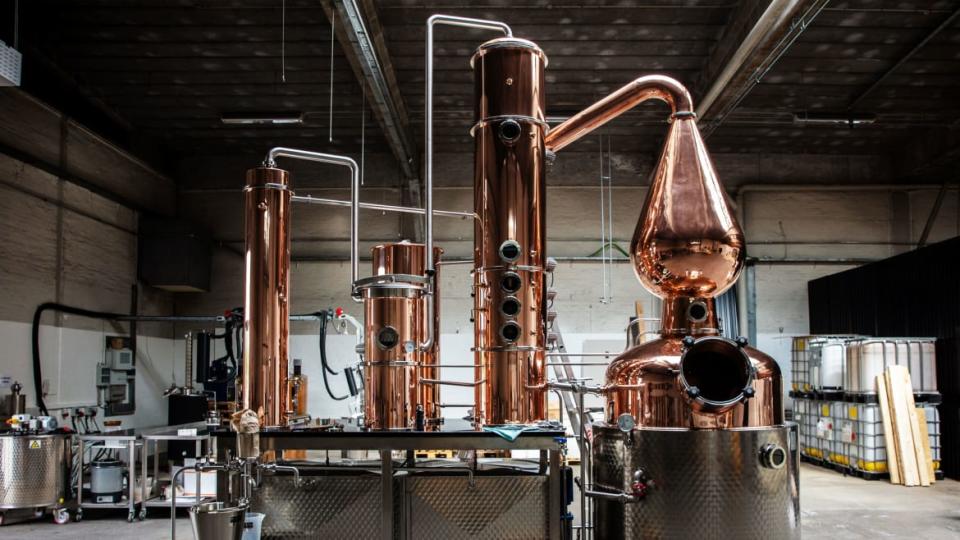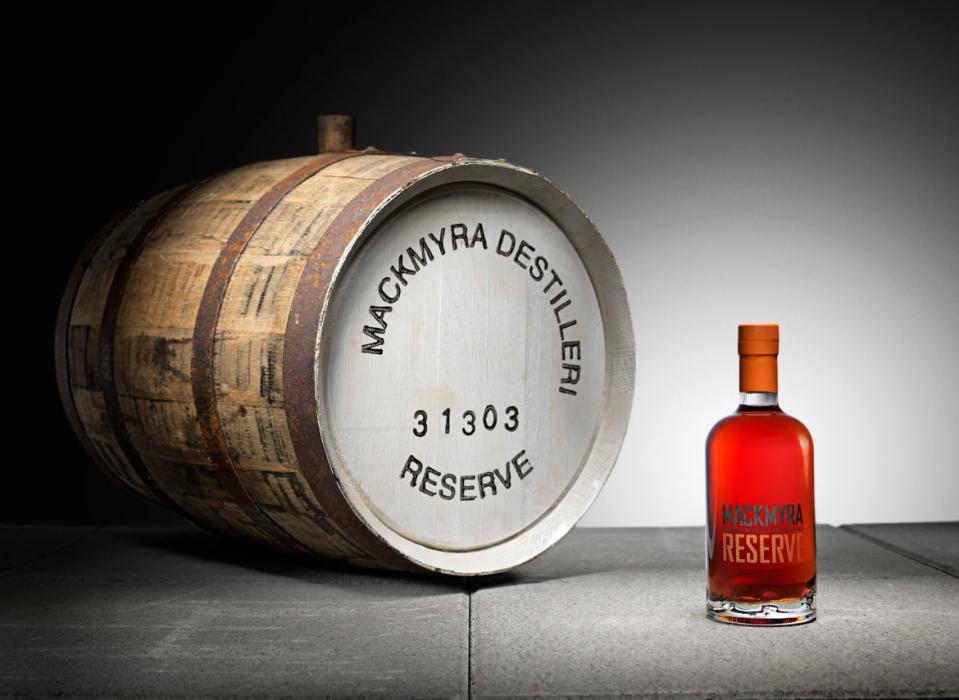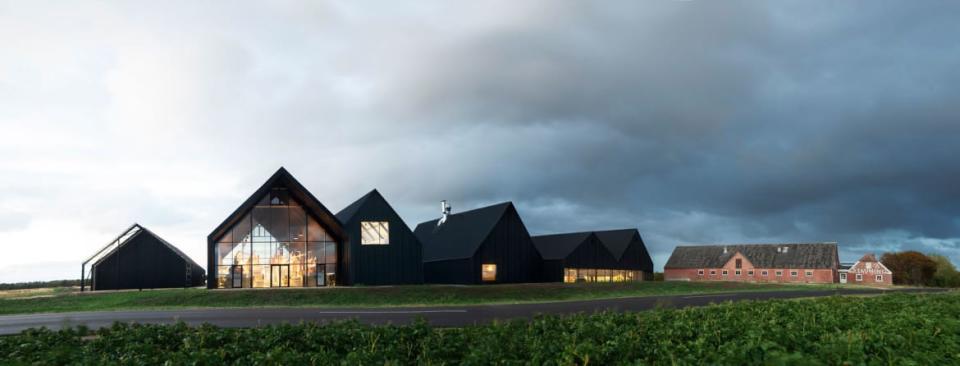Move Over Aquavit: Scandinavia’s Booming Whisky Scene

The Scandinavians are known for their love of aquavit, but now they’re turning their affections to a different kind of spirit: whisky.
You could argue that whisky is actually written into Scandinavian DNA. After all, their Viking ancestors frequently travelled to Scotland and Ireland. And the region’s famous liquor, aquavit, which is flavored with herbs and spices, including caraway and dill, is very similar to aquavitae, the predecessor to Scotch whisky.
The Case for Drinking Scotch in Tiki Cocktails
Perhaps, it’s the shared cold, bitter climate that makes warming up with a dram one of both Scotland’s and Scandinavia’s most cherished ways to pass a long dark evening. Whisky certainly embodies the Danish concept of hygge—that sense of conviviality and contentment that comes from sipping a delicious spirit in front of a blazing fire on a cold night.
So, it seems only natural that the region has fallen in love with whisky and established its own scene, becoming a hotbed for whisky innovation across Denmark, Norway and Sweden, as well as the rest of the Nordics.
Over the last two decades, more than 40 new whisky distilleries have been established. While many of these brands draw upon techniques well-honed by their Scottish cousins, some distillers are also creating whiskies that are shaped by their local climate, cultural identity and the region’s signature approach to design.
While it may seem like Scandinavia’s whisky scene has sprung up overnight, the region’s first modern single malt distillery, Mackmyra in Sweden, actually dates back nearly 20 years.

Considered the mother of Scandinavian whisky, Mackmyra began operation in the village of the same name in 2002. It started out with a simple ethos: creating a whisky that is quintessentially Swedish, using local barley, spring water and Swedish oak. It even harvests local peat and juniper to smoke its malted barley.
“We were the first single malt distillery in Sweden,” says Magnus Dandanell, co-founder of Mackmyra. “Since then, more distilleries have started and new world whisky has become a phenomenon worldwide with more and more Scandinavian malt enthusiasts learning to appreciate locally distilled whisky.”
In 2011, when the company built a second distillery six miles east, Mackmyra adopted a simple yet functional Scandinavian architectural design for its new, unique facility. The first of its kind, the “Gravity Distillery” is one of the world’s most energy efficient, laid out vertically in a 35-foot tower with ingredients transported between phases of production using the force of gravity. (This is an idea that has been used to build wineries for centuries.)
But it’s not just the Swedes who are distilling. This past February, the Copenhagen Distillery in Denmark released a single malt whisky, which was the first to be distilled and aged in the city. Everything about the whisky screams Danish, from the local malted barley base to the maturation in European oak casks seasoned with beechwood smoke in the style of a traditional smokehouse. The distillery even draws on the country’s design heritage by bottling the whisky in individually unique, hand-blown glass bottles made by local artisans Holmegaard.
The Copenhagen Distillery may be the first company producing single malt in the country’s capital, but Denmark is now home to around 13 whisky distilleries, all of which have been established in the last decade.
Why the surge of new distilleries now? It’s partly the result of steadily rising interest in single malt across Europe during the 1980s and ’90s, combined with the lifting of manufacturing monopolies in Scandinavia that allowed private companies to distill spirits. But the early restrictions on whisky availability prompted the emergence of whisky clubs, where friends would meet to taste different bottles and share information, which was pretty limited at the time. As members became more serious about their whisky they would travel, visiting distilleries in Scotland and further afield, picking up new whiskies to take back to their friends.
Indeed, many of the new Nordic distilleries have been started by groups of friends with no prior experience in distillation, but who share an intense passion for whisky. The idea for Mackmyra was conceived by eight schoolmates during an annual skiing trip; Denmark’s Stauning was established in a deserted slaughterhouse by nine whisky enthusiasts; while Finland’s Kyrö was dreamed up by five friends while they were in the sauna.
After an investment from Diageo-backed Distill Ventures, Stauning has since moved to West Jutland and into a new building with 24-stills. Again, its focus is on using traditional Scottish distilling techniques and local ingredients, but with a distinctly Scandinavian approach.

“Stauning is a perfect distillation of the Western Jutland mentality,” explains co-founder Alex Munch. “The distillery was built by local people. Our whisky reflects the surroundings: the wind, crops, soil, peat, heather. The way we make it mirrors the local mindset: self-sufficient, determined, able to improvise, doing things their way. We employ a mix of old and new world methods in our whisky making and we have revived some methods long lost to industrialization.”
Those methods include distilling in direct-fired alembic pot stills (the style used to make Cognac in France) and floor-malted rye and barley, both processes largely abandoned by Scotch whisky producers. Meanwhile the building itself is a true reflection of its environment—built to resemble Danish farmhouses, the buildings are clad in scorched black wood that resemble the interior of a charred whisky barrel.
For Roar Larsen, CEO of Myken distillery, which is located on the eponymous island 32 kilometers off Norway’s western coast, producing a whisky that’s a reflection of its environment is also vital. “When we started there was no Norwegian malt to be had commercially, but over the last five years or so, together with the large number of local beer producers, we have been able to convince some adventurous farmers to start malting Norwegian barley.”
As well as local barley, the distillery makes its whisky using desalinated seawater from the Arctic Ocean, and matures every drop on the tiny island in conditions that Larsen claims impacts the whisky’s flavor. “The air is saturated with salt and maritime aromas, and this air goes in and out of the casks with varying temperatures, humidity and air pressure, and will over time also impart its own signature on our fluids,” he says. “It is no accident that our brand is the same as the name of our island: Myken. We believe we are distilling and bottling the essence of these islands.”
Back on mainland Norway, Aurora Spirits is drawing on its unique environment in the Arctic Circle to make the world’s most northerly whisky under the glow of the Northern Lights. Situated near the Lyngen Alps, the distillery uses purified glacial water alongside Nordic barley, while distillation occurs in Aurora’s still, which it calls a “fusion of modern distilling technology and tradition.” Meanwhile, maturation occurs in small casks resting in underground bunkers built by the Nazis during German occupation in WWII.
This summer the distillery launched its first single malt, Bivrost, the Viking name for the Northern Lights that were thought to be a magical rainbow bridge linking our world with the Norse realm of Åsgård. With Norwegian tourism on the rise and widespread interest in Norse mythology thanks to the Thor films, the stories of the Vikings and their Gods will play a strong role in putting this remote distillery on the map.
Regardless of location, whisky presents a whole new world for Scandinavia’s spirits industry. While aquavit will continue to play a central role in the region’s food and drink scene, it will now need to share the limelight with its not-so-distant relative.
Get our top stories in your inbox every day. Sign up now!
Daily Beast Membership: Beast Inside goes deeper on the stories that matter to you. Learn more.

 Yahoo News
Yahoo News 